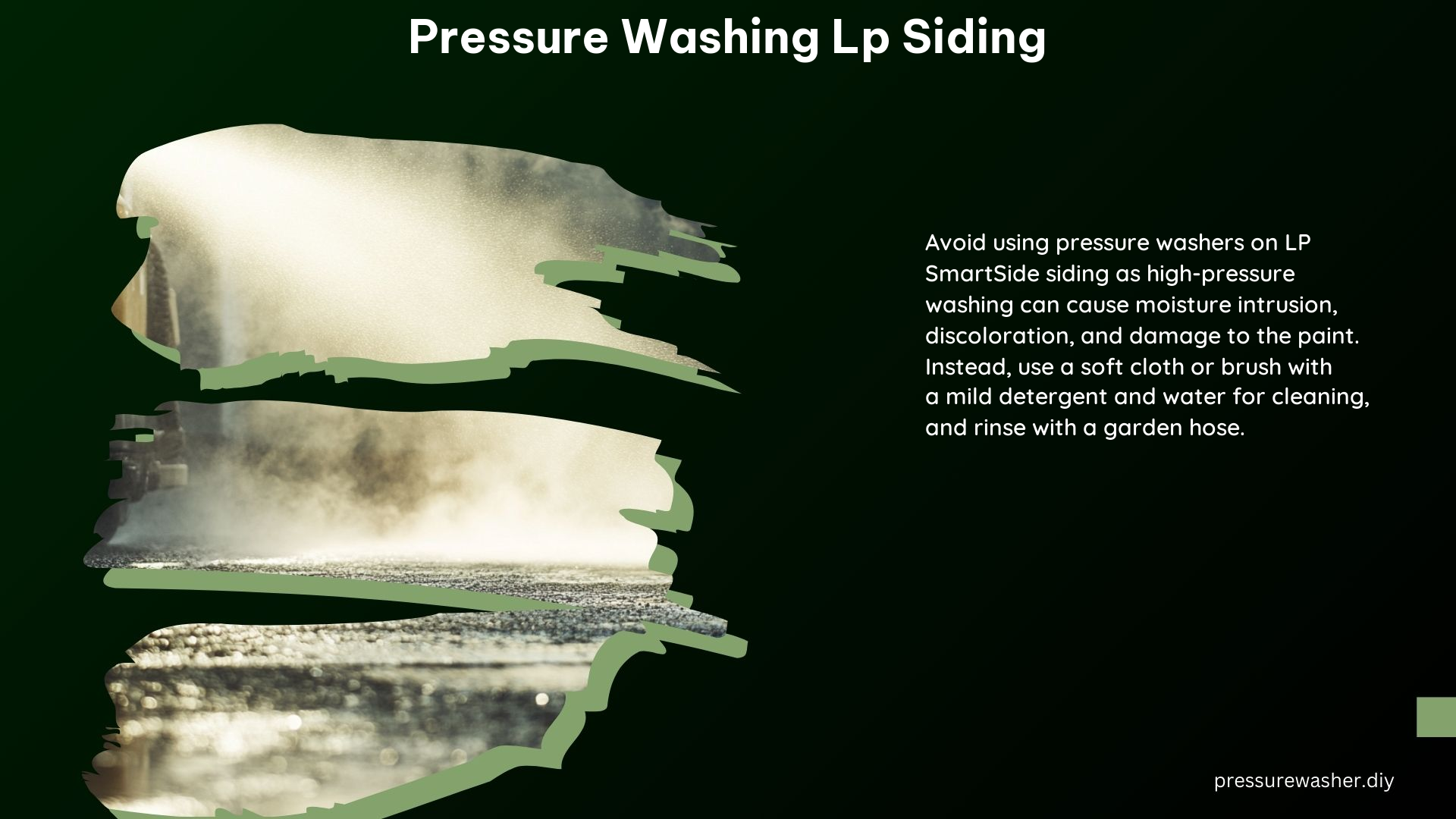Pressure washing LP SmartSide siding requires a delicate approach to ensure the material’s integrity is maintained. This comprehensive guide will provide you with the necessary information to effectively clean and maintain your LP SmartSide siding without causing any damage.
Understand the Risks of High-Pressure Washing
High-pressure washing can be detrimental to LP SmartSide siding, as it can lead to moisture intrusion, discoloration, and damage to the paint. The recommended pressure range for pressure washing LP SmartSide siding is between 2000 to 2500 PSI, as this strikes a balance between effective cleaning and minimizing the risk of damage.
Moisture Intrusion
High-pressure washing can force water into the siding’s seams and joints, leading to moisture buildup and potential structural issues. This can compromise the siding’s durability and lifespan, ultimately requiring costly repairs.
Discoloration
Excessive pressure can also cause discoloration of the siding, particularly in areas where the paint has worn down or been damaged. This can result in an uneven and unsightly appearance, detracting from the overall aesthetic of your home.
Paint Damage
The high-pressure water stream can also strip away the protective paint layer, exposing the underlying material to weathering and degradation. This can lead to a premature need for repainting or even replacement of the siding.
Recommended Pressure Washing Techniques

To effectively clean your LP SmartSide siding without causing any damage, follow these best practices:
Use a Low-Pressure Setting
Adjust your pressure washer to a low-pressure setting, typically between 2000 to 2500 PSI. This will ensure the water stream is gentle enough to clean the siding without forcing moisture into the material.
Utilize a Wide Fan Tip
Opt for a wide fan tip on your pressure washer, as this will distribute the water pressure more evenly across the siding surface. This helps to avoid concentrated high-pressure streams that can cause damage.
Maintain a Safe Distance
Keep the pressure washer wand at least 12 inches away from the siding surface during the cleaning process. This distance will prevent the water stream from directly impacting the material and causing potential harm.
Employ Soft Cleaning Tools
Use a soft-bristle brush, sponge, or cloth to gently scrub the siding, rather than relying solely on the pressure washer. This will help to dislodge any stubborn dirt or debris without risking damage to the surface.
Utilize Mild Detergents
When cleaning the siding, use a mild, pH-neutral detergent diluted in water. Avoid harsh chemicals or abrasives, as these can compromise the siding’s protective coatings and lead to long-term damage.
Maintaining LP SmartSide Siding
Regular maintenance is crucial to preserving the longevity and appearance of your LP SmartSide siding. Here are some key steps to follow:
Perform Visual Inspections
Conduct regular visual inspections of your siding, looking for any signs of wear, cracks, or other issues that may require attention. Address any problems promptly to prevent further deterioration.
Manage Drainage and Irrigation
Ensure that your home’s gutters and downspouts are functioning correctly, directing water away from the siding. Additionally, adjust any sprinklers or irrigation systems to avoid directly watering the siding.
Address Mold and Mildew
If you notice the presence of mold or mildew on your LP SmartSide siding, use a solution of three parts water to one part white vinegar to safely and effectively remove the growth.
Consult Manufacturer Recommendations
Refer to the LP SmartSide siding manufacturer’s guidelines for any specific cleaning or maintenance instructions, as they may have additional recommendations or requirements to ensure the longevity of their product.
By following these best practices for pressure washing and maintaining your LP SmartSide siding, you can keep your home’s exterior looking its best while protecting the integrity of the material.
